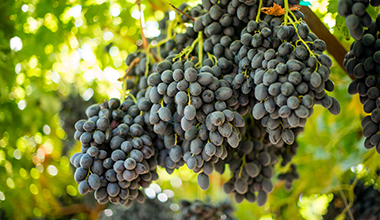April 9, 2025
Wine grape updates
California’s 2024 Grape Crush Report shows some interesting trends.
California’s 2024 Final Grape Crush Report was released in March. The total crop came in at 2.9 million tons, 22% below the previous season. Returns to growers were down on average 4% for white and 1% for red varieties. Declines were observed across several major varieties including Chardonnay (-1%), French Colombard (-4%), Zinfandel (-9%), Pinot Gris (-6%), Muscat of Alexandria (-2%), Sauvignon Blanc (-2%) and Merlot (-1%). These declines were partially offset by gains in Cabernet Sauvignon (3%) and Pinot Noir (2%), among others. Prices fell broadly across the state, with Mendocino and Lake counties taking the biggest hit. Prices were also down in the Central Valley, the state’s largest production area, and mixed in the Central Coast region. While new plantings are favoring red varieties, including Cabernet Sauvignon with 26% of the total, Chardonnay was also a favored variety with 20%.
By value, year-over-year wine sales in February fell for off-premise (-6%), on-premise (-5%) and Direct-to-Consumer (DtC) (-10%) sales. Sauvignon Blanc was the only variety during this period to have an increase in both sales value and volume, while white blends benefited from a bump in sales value only. Weak markets are pressuring producers. Despite some new plantings, reports suggest California and Washington experienced a net loss of 50K and 4k acres in 2024, respectively. President Trump announced relatively high tariffs on key wine export markets, including the European Union (EU), Japan, China, South Korea and others. How these countries will respond is not yet clear as of the writing of this report. No new tariffs were announced for Canada, the largest export market outside of the collective EU.
Profitability
March 12, 2025
Wine: Breakeven profitability - Neutral 12-month outlook
Wine grapes: Slightly unprofitable - Neutral 12-month outlook
Wineries with strong Direct-to-Consumer sales should continue to benefit from solid demand, while those focused on low to mid-tier products and large retail distribution outlets face excess supply and falling demand. Wine inventories remain high and will continue to pressure prices.
Grower profitability ranges widely, and in part depends on whether growers have contracts or not (particularly in Washington). Excess production capacity, wine inventories and falling wine demand will continue to pressure the industry.
IN THIS SECTION
![]()

Wine/Vineyard Industry Perspective
View the latest AgWest Wine/Vineyard Industry Perspective
Learn more